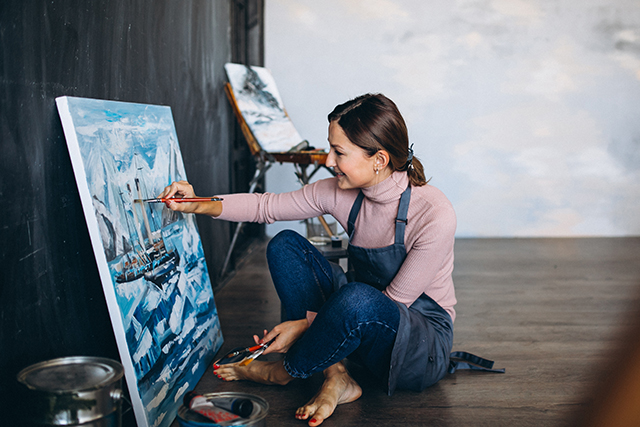1. Introduction: The Power of Visual Storytelling
In a world driven by visual media, storytelling has become an integral part of our lives. From movies and television shows to advertisements and digital content, the power of a well-told story cannot be underestimated. It captivates audiences, evokes emotions, and leaves a lasting impact. Visual storytelling takes this power to a whole new level by combining the narrative with captivating visuals. And at the heart of this creative process lies tv storyboard.
2. What is a Storyboard?
A storyboard is a sequence of illustrations or images that represent key moments or scenes in a story. It acts as a blueprint for the entire visual production, serving as a visual guide for directors, artists, and other members of the creative team. Storyboards are typically arranged in a chronological order, providing a step-by-step visualization of the story’s progression.
3. The Importance of Storyboarding
Storyboarding is a vital step in the creative process as it helps artists plan and structure their ideas effectively. It allows them to experiment with different compositions, camera angles, and visual elements before committing to the final product. By creating a roadmap for the visual narrative, storyboarding ensures that the artist’s vision aligns with the overall goals of the project.
4. Benefits of Storyboarding
Storyboarding offers numerous advantages to artists and creators. Let’s explore some of the key benefits:
4.1 Enhancing Creativity and Collaboration
Storyboarding encourages artists to think visually and explore different creative possibilities. It allows them to experiment with compositions, lighting, and other visual elements, fostering innovation and artistic expression. Additionally, storyboarding facilitates collaboration within the creative team, as it provides a visual reference for everyone involved, ensuring a shared understanding of the project’s vision.
4.2 Streamlining the Production Process
By planning the visual sequence in advance, storyboarding helps streamline the production process. It allows artists to identify potential issues or gaps in the narrative early on, minimizing the need for extensive revisions later. Storyboards also serve as a valuable reference during the production phase, ensuring consistency and coherence in the final output.
4.3 Visualizing the Narrative Flow
One of the primary advantages of storyboarding is its ability to visualize the flow of the narrative. It helps artists determine the pacing, rhythm, and overall structure of the story, enabling them to create a more engaging and immersive experience for the audience. Storyboards provide a clear visual representation of how scenes transition from one another, enhancing the storytelling aspect of the project.
4.4 Efficient Communication of Ideas
Storyboarding acts as a powerful communication tool, allowing artists to convey their ideas effectively to the rest of the team. Visual representations in the form of sketches, annotations, and notes facilitate clear and concise communication, ensuring that everyone is on the same page. This reduces the chances of misinterpretation and fosters a collaborative and productive working environment.
5. Elements of a Storyboard
A well-executed storyboard comprises various essential elements. Let’s take a closer look at each of them:
5.1 Thumbnails and Sketches
Thumbnails and sketches form the foundation of a storyboard. These rough visual representations capture the key moments, actions, and emotions of each scene. They provide a quick and effective way to ideate and iterate on the visuals before investing significant time and resources.
5.2 Shot Composition and Camera Angles
The composition of each shot and the chosen camera angles are crucial aspects of storyboarding. Artists determine the framing, perspective, and focal points to create the desired visual impact. Strategic use of different angles, such as wide shots, close-ups, and low or high angles, adds depth and dimension to the storytelling.
5.3 Dialogue and Textual Elements
Dialogue and textual elements play an important role in storyboarding, especially in projects involving dialogue-driven narratives. Artists include speech bubbles, captions, or brief descriptions to convey important dialogues or key narrative points within the frames. This helps the team understand the intended dialogue flow and align it with the visuals.
5.4 Visual Style and Artistic Direction
Storyboarding allows artists to establish the visual style and artistic direction of the project. They can experiment with different aesthetics, color palettes, and visual motifs to create a cohesive and visually captivating story. Determining the visual style early on ensures consistency and helps set the desired tone for the project.
6. The Storyboard Process: From Concept to Completion
The storyboard process involves several stages, each contributing to the overall success of the project. Let’s explore the key steps:
6.1 Conceptualization and Idea Generation
The first step in the storyboard process is conceptualization. Artists brainstorm ideas, develop the story’s concept, and outline the key plot points. This stage is crucial for defining the core narrative and setting the creative direction.
6.2 Translating Ideas into Visuals
Once the concept is finalized, artists begin translating their ideas into visual representations. They create rough thumbnails and sketches to outline the key scenes and actions. This stage allows them to explore different compositions, camera angles, and visual elements to bring the story to life visually.
6.3 Refinement and Iteration
After the initial sketches, artists refine their storyboard by adding more details and clarity to the visuals. They may revise the compositions, adjust the pacing, and fine-tune the storytelling elements. Feedback from the creative team is crucial at this stage to ensure that the storyboard aligns with the project’s goals and vision.
6.4 Storyboard Presentation and Feedback
Once the storyboard is refined, it is presented to the relevant stakeholders, such as directors, producers, and other members of the production team. Feedback and input are gathered, and revisions are made based on the constructive critique. This iterative process continues until the storyboard meets the desired vision and objectives.
7. Tools and Techniques for Storyboarding
Storyboarding can be done using various tools and techniques. Let’s explore some of the popular options:
7.1 Traditional Methods: Pen and Paper
Many artists still prefer the traditional approach of using pen and paper to create storyboards. It offers a tactile and intuitive experience, allowing for quick sketches and annotations. Artists can easily carry their storyboard notebooks and work on them anywhere, making it a convenient option.
7.2 Digital Storyboarding Software
Digital storyboarding software has gained popularity due to its versatility and efficiency. There are numerous software options available that provide features like pre-made templates, drag-and-drop functionality, and the ability to add annotations and dialogue. These tools allow artists to create detailed and professional-looking storyboards with ease.
7.3 Collaboration and Remote Work
In today’s digital age, collaboration and remote work have become essential aspects of the creative process. Many digital storyboard tools offer collaboration features that enable artists to work together in real-time, regardless of their physical location. This streamlines the workflow and ensures effective communication among team members.
8. Case Studies: Storyboarding in Action
To understand the practical applications of storyboarding, let’s explore a few case studies:
8.1 The Art of Storyboarding in Film
In the film industry, storyboarding is widely used to plan and visualize the sequences before the actual shooting begins. Directors and cinematographers collaborate with storyboard artists to create a visual roadmap that guides the entire production process. Storyboards help in visualizing complex action scenes, determining camera movements, and capturing the desired aesthetics.
8.2 Storyboarding in Animation: Bringing Characters to Life
Storyboarding plays a crucial role in animation, where every frame needs to be carefully crafted. Artists use storyboards to define character movements, expressions, and the overall timing of the animation. It helps maintain consistency and coherence throughout the animation process and ensures that the characters and their actions align with the narrative.
8.3 Storyboarding in Advertising: Crafting Compelling Visual Messages
Advertising campaigns often rely on visually engaging storytelling to capture audience attention. Storyboarding helps advertisers plan and visualize their ideas, ensuring that the visual message effectively communicates the desired brand image or product features. Storyboards assist in creating impactful commercials, promotional videos, and digital advertisements.
9. Challenges and Solutions in Storyboarding
Storyboarding, like any creative process, comes with its challenges. Let’s explore some common hurdles and their potential solutions:
9.1 Balancing Creativity and Constraints
Artists may face challenges when trying to balance their creative vision with practical constraints such as budget limitations, technical requirements, or time constraints. Finding innovative solutions within these limitations is crucial. Collaborating with the production team and seeking input from relevant stakeholders can help strike a balance between creativity and practicality.
9.2 Adapting to Changing Technologies
As technology evolves, artists need to adapt their storyboard techniques to leverage new tools and platforms. This may involve learning digital storyboarding software, exploring virtual reality or augmented reality applications, or embracing emerging technologies that enhance the storytelling process. Staying updated with industry trends and continuously learning new skills is key to overcoming this challenge.
9.3 Overcoming Communication Barriers
Storyboarding relies heavily on effective communication between artists, directors, and other team members. Miscommunication or a lack of clarity can lead to misunderstandings and impact the final result. Clear and concise annotations, visual references, and open channels of communication can help overcome communication barriers and ensure that everyone involved in the project shares a common understanding of the vision.
10. Conclusion
Storyboarding is an indispensable tool for artists and creators in the realm of visual storytelling. It empowers them to plan, organize, and communicate their ideas effectively, resulting in a more coherent and captivating final product. By harnessing the advantages of storyboarding, artists can unleash their creativity, streamline the production process, and bring their artistic visions to life with magic and precision. Inquire here for post production process of your storyboard.



